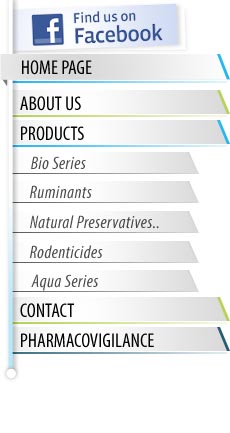
 |
|
Clear light yellow colored antibiotic solution containing 300mg florphenicol in each ml.
|
|
Florphenicol is a thiamphenicol derivation, containing fluorine group in its chemical structure instead of hydroxyl bonded to 3 staged carbon atom. Florphenicol has bactericidal effect. It inhibits the protein synthesis by binding to the 50S ribosomal subunits of bacteria.
|
|
Bio-phenicol Oral Solution is used in broiler chickens to treat respiration tract diseases caused by E.coli, sacculitis and coli septicemia.
|
|
Florphenicol is used by adding into drinking water for 3-5 days on 30mg/kg live weight basis. Practical dose is 100m1 Bio-phenicol Oral solution for every 1000kg depending on the water consumption.
|
|
It is sold at veterinary clinics and pharmacies with veterinarian prescription. (VHR- Veterinary Doctor Prescription)
|
|
| Biomedsol.net | | | Her hakkı saklıdır. | | | ||
